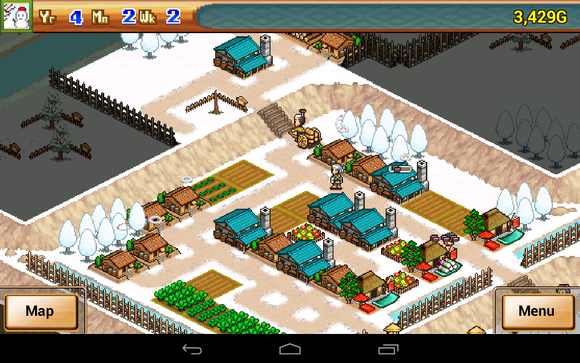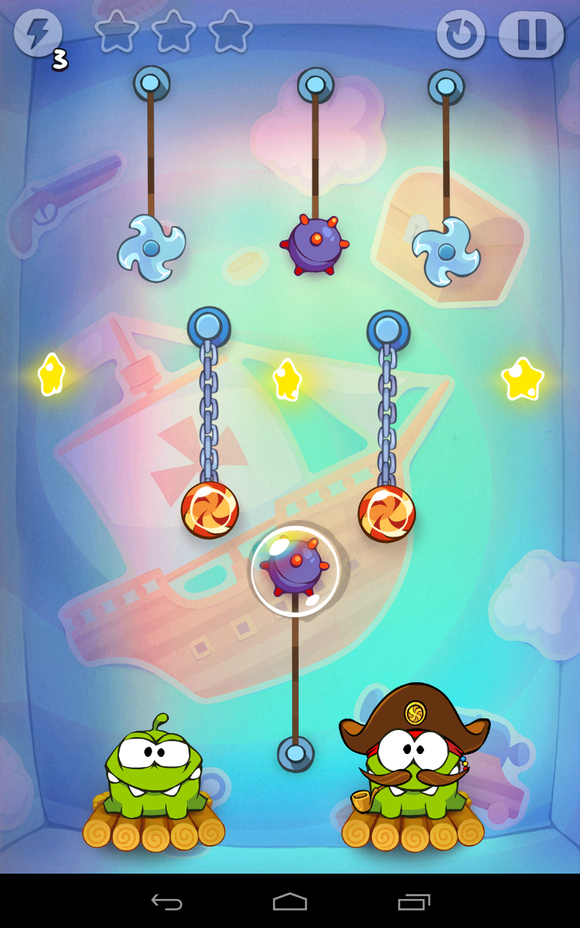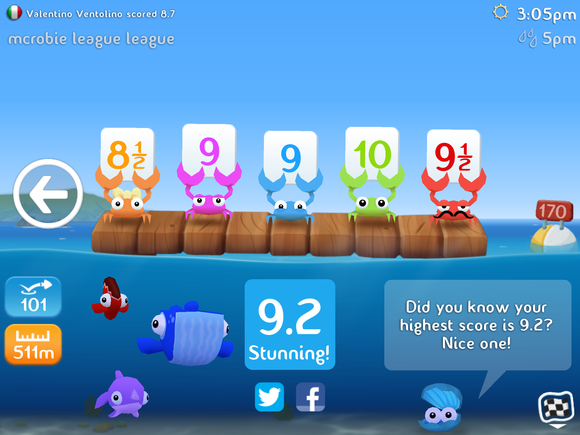Ninja Village
Android, $4.99
I’m sorry Kairosoft, but the basic premise here is flawed. Ninjas are nigh-invisible; anyone with the most basic knowledge of pop culture knows that. The notion that they’d be operating out in the open, building villages harvesting crops— not the souls of their enemies—is ludicrous at best. But that’s what the developer of legendary time sinks like Game Dev Story cket Academy would have us believe with their latest game: Ninja Village.
Your village of ninjas is working to unify the country by defeating warlords reinstating the deposed shogun to his rightful place. Building farmhouses fields will give your ninjas a place to work live, where they’ll raise crops to sell to wering merchants. You’ll use the funds you raise to recruit soldiers for an army, train your ninjas, who’ll lead your troops into battle.
That signature Kairosoft charm is at its best here, with a simple premise—raise money, crush foes—belying wondrous complexity. The crops you grow can be sold, or you can build workshops to process your goods, then build consumer-facing tea tofu shops to entertain wering travelers earning significantly more cash. Combat is largely a hs-off affair that takes place over three rounds, but you can assign blanket orders to your army’s unit types (archers, focus on that cavalry!), use your ninjas’ special abilities to turn the tide of battle—provided they aren’t cut down first. rlords you defeat will reward you with new unit types or deeds to exp your ninja village, but strike one down the rest will grow stronger, requiring you to plan ahead to ensure that you grow at the right pace.

If you’ve played any of the games in Kairosoft’s lineup, you’ll be right at home here. It’s definitely worth five bucks, but if you’re on the fence many of their games eventually offer a limited te version. It’s currently Android only, but their games have also been known to eventually wer over to the Apple app store, so keep your eyes peeled.
Cut The Rope: e Travel
Android, Free; iOS, $2.99
I’ve always found Cut the Rope to be something of an anomaly. The physics-puzzler tasks you with feeding a green critter cy by, well, cutting some rope. Things get complicated, as you’ll need to collect three stars on every level, evade traps, solve puzzles quickly to earn a high score. It’s strange, it’s cute, after a few terse introductory levels it becomes fiendishly difficult, playable in brief sessions but deming patience— fast fingers.
So you get the general premise then? The sequel adds a second green critter to ply with sweets, you can’t complete a level until they’re both fed. It looks like a simple change, but it’s maddening in all of the best ways. You’ll need to juggle two pairs of treats, with levels challenging you to swing them through buzz saws to free them from chains, stop time at just the right momentum to eliminate momentum, or set up chain reactions with bombs to bounce everything into the right mouth. It might look like more of the same (which wouldn’t necessarily be bad), but new abilities spread across new levels makes for a great new experience.
Cut the Rope: e Travel will set you back $3 on iOS, but it’s free ( ad-supported) on Android. The advertisements aren’t too bad, with a banner showing up when you complete stages, the occasional full screen video between stages (which can be closed quickly, if it bothers you).
Fish Out of ter
iOS, $0.99
Rocket is my point, err… fish. aerodynamic to a fault, she’ll skip majestically if you give her a solid horizontal trajectory are generous with your boosting. Micro the whale is up next; he’s a big guy gives a solid bounce off the surface of the water, so I use him to build some great distance. Finlay the dolphin is my closer. She’s consistent; you’ve got to flick her down towards the water—but not so firmly that she hits the sea floor— she’ll ease into that dolphin-y rhythm, diving in out of the waves swimming her little fins off earning plenty of skips along the way.
Halfbrick Studios’ Fish Out of ter is my introduction to the world of fish skipping, a sport some dark corner of my heart hopes is real, or will be real, vile as it may seem. ft one of six fish (okay, there are some mammals involved) out of the water hurl them out to sea, they’ll bounce off the surface a few times then come to a stop. After three fish have been tossed, a panel of five crabs will rate their performance based on the number of skips, the distance they’ve travelled, the current weather conditions, or whatever they feel like, in the case of hard-to-please Harwood the crab. rk.
Every fish skips or bounces a little differently, so you’ll need to get plenty of practice tries in before finding a set up you like. You’ll also need to take the time of day into account as the game’s weather changes on the hour; there were jellyfish out at 2pm today, which gave Micro a few extra bounces but absolutely ruined Finlay’s rhythm, requiring me to give other fish a go. By 3pm the weather had cleared it was smooth sailing. ich of course meant I’d spent an hour staring at my id flicking virtual fish into the air, but surprisingly enough I’m okay with that.
ogress comes in the form of goals. They can be as simple as “skip 50 times” or “cover more than 150 meters with Micro the whale,” or as cryptic as “check for rusty hinges.” I won’t spoil the mystery for you. Once you’ve completed three goals you’ll gain a level get to choose from one of three chests, which will reward you with crystals. You’ll combine those crystals onto a charm template to create power ups, which will boost your score or even bolster your reputation with some of the crabs, which is always nice.
Fish out of water will set you back a buck. If you’ve got especially deep pockets you can spend real cash on packs of crystals, but their romized nature suggests that wouldn’t be the best use of funds (or a guaranteed means of getting ahead, either).





















